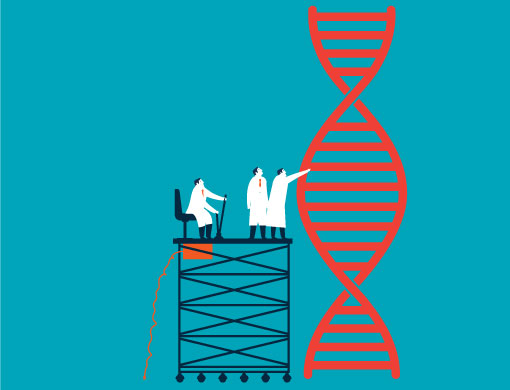
Next Generation Sequencing – Ushering in a New Era of HLA Typing
As most of you know, in addition to providing lifesaving blood products for local patients, Stanford Blood Center is deeply committed to research initiatives to help the patients of tomorrow. On the forefront of much of this research is our Histocompatability, Immunogentics, and Disease Profiling Lab (the HLA Lab), who focuses on histocompatibility and genetic testing for solid organ and bone marrow transplantation.
One way they are currently leading the field of transplantation medicine is through their use of NGS Typing, a breakthrough DNA sequencing methodology.
But what exactly is NGS Typing, and how will it impact patient care? NGS stands for Next Generation Sequencing (sometimes referred to as New Generation Sequencing); a new form of DNA sequencing that will allow us to get more accurate HLA Typing, much faster. DNA sequencing is the process through which we determine the exact order of nucleotides in a DNA cell, then through HLA Typing we try to match the sequences of a donor with the sequences of a patient to get the most precise match for a bone marrow, stem cell, or solid organ transplant.
NGS provides us with three things: higher accuracy, higher resolution, and fewer ambiguities, all of which result in the best possible match for a patient in a short amount of time. Using old methodology, we had to look at shorter segments of DNA and make assumptions about the rest, then perform tiered testing afterward to reduce ambiguities. With NGS, we can look at the entire gene, allowing us to determine one HLA type or another with less ambiguity. This, in turn, lessens the need for tiered testing after the fact, which reduces turnaround time for reporting a match (from 14 days to 10 days, to be exact).
NGS is particularly revolutionary in terms of patient care. Say a patient has blood cancer and is waiting for a hematopoietic stem cell (HSC) transplant, for example. That patient would need to undergo chemotherapy right before the transplant, as cancer needs to be in remission to ensure a successful transplant. If a patient is waiting 14 days, there’s a chance that they will no longer be in remission by the end of the waiting period. But if they only have to wait 10 days, the chance that is significantly lower. Even better, according to Dr. Fernández-Viña, this turnaround time may soon be down to just seven days thanks to NGS.
“This is one of those breakthrough technologies that come only once every 20 years and changes the field,” said Dr. Marcelo Fernández-Viña, Co-director of the HLA Lab. And here at SBC, we are very proud to be a part of this revolutionary advancement!
Remember: when you donate blood, your gift not only helps local patients, but research initiatives too! Make your appointment today at sbcdonor.org.
